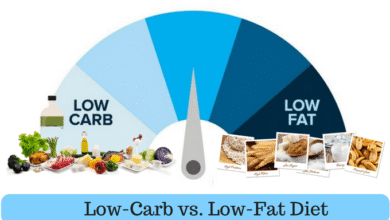Best Morning Foods to Control Diabetes Naturally | Healthy Breakfast for Blood Sugar Management

Living with diabetes often feels like managing two lives: the one you want to live and the one your blood sugar demands. Mornings, in particular, can be tricky. You wake up tired, sometimes hungry, and often tempted by quick fixes like sugary coffee, buttered bread, or cereal. Yet those small morning choices can shape how your entire day unfolds. If you start your morning with the wrong food, you’re signing up for mid-morning crashes, cravings, and mood swings. But if you choose smartly, your breakfast can become your most powerful ally in blood sugar management.
So, what exactly should you eat in the morning to control diabetes? This isn’t about starving yourself or skipping the joy of eating. Instead, it’s about balance—mixing foods that work with your body, not against it. Research shows that a breakfast rich in protein, fiber, and healthy fats keeps glucose levels stable, supports energy, and even reduces cravings for junk food later in the day. That means fewer spikes, less stress, and more freedom. This blog will walk you through not just what to eat, but why these foods work, how to prepare them, and how people across Africa and Europe can apply these tips using affordable, accessible ingredients.
Read Also The Number One Food to Lower Blood Sugar Naturally
Why Morning Meals Matter for Diabetes Control
If you’ve ever wondered why doctors, dietitians, and even wellness coaches constantly emphasize breakfast, here’s the answer: your body is like an engine, and after 8–10 hours of fasting overnight, it wakes up needing the right fuel. For someone living with diabetes, the type of fuel you give your body at sunrise sets the pace for blood sugar control throughout the day. Skip breakfast, and your liver releases glucose stored overnight, which can push your blood sugar up before you’ve even taken a bite. Eat a sugar-heavy breakfast, and you’ll spike quickly, only to crash hard by mid-morning. Both scenarios create a frustrating cycle of highs and lows.
Studies, including reports by Diabetes UK, show that people who eat a balanced breakfast have better insulin sensitivity and fewer cravings. This means your body processes sugar more efficiently, lowering your risk of complications like neuropathy or cardiovascular problems. Breakfast also reduces cortisol (the stress hormone), which naturally rises in the morning. High cortisol plus poor food choices equals unstable blood sugar. On the flip side, pairing slow-digesting carbs with protein and healthy fats in the morning ensures your glucose levels rise gradually, providing sustained energy. Think of it as building a steady bridge instead of riding a rollercoaster.
Signs You’re Choosing the Wrong Morning Foods
Not sure if your breakfast is doing more harm than good? Your body always gives signals—you just have to listen. If you often feel hungry within an hour after eating, sluggish even though you just woke up, or moody without explanation, your breakfast may be the culprit. Eating refined carbs like white bread, doughnuts, or sweetened cereals dumps sugar into your bloodstream at lightning speed. Your pancreas rushes in with insulin, but this surge often overshoots, leaving you drained, shaky, and craving more sugar.
Here’s a quick comparison:
| Bad Breakfast Choice | Impact on Blood Sugar | How You Feel After |
|---|---|---|
| Sugary cereals | Rapid sugar spike & crash | Hungry and irritable |
| White bread & jam | Quick carb overload | Sluggish, low energy |
| Pastries & doughnuts | High sugar + fat combo | Cravings, mood swings |
If your mornings feel like a cycle of coffee, crash, and craving, it’s not just “normal tiredness.” It’s your breakfast failing you. A good morning meal should leave you feeling energized, full, and stable—not desperately counting the hours until lunch.
Best Morning Foods to Control Diabetes
The good news? You don’t have to eat “boring diabetic meals.” The key is smart swaps. Here’s what works:
1. Oatmeal (But Make It Smart)
Oatmeal is one of the best morning foods to control diabetes. Thanks to its soluble fiber, it slows down digestion, keeps you full, and prevents sugar spikes. But not all oatmeal is created equal. Instant flavored packets often contain as much sugar as candy bars. Instead, choose rolled oats or steel-cut oats. Add chia seeds, flaxseeds, or even a handful of walnuts for extra fiber and omega-3s. Top with berries for antioxidants, and skip adding sugar—try cinnamon for flavor instead.
2. Eggs: The Protein Powerhouse
Eggs are simple, versatile, and incredibly effective at stabilizing blood sugar. High in protein and healthy fats, they slow glucose absorption and keep you full for hours. Boil them, scramble them, or make a veggie-packed omelet with spinach, mushrooms, and tomatoes. They’re affordable in Africa, Europe, and beyond, making them a universal go-to.
3. Greek Yogurt with Nuts
Greek yogurt has double the protein of regular yogurt and fewer carbs. Add almonds or walnuts, and you have a creamy, filling breakfast that keeps insulin levels steady. Just avoid flavored yogurts—they’re sugar traps.
4. High-Fiber Fruits
Not all fruits are equal for diabetes. Skip juice—it’s just liquid sugar. Instead, go for apples, pears, and berries. Their fiber slows down sugar absorption, making them safe and energizing choices. Pair with protein (like a boiled egg) for balance.
5. Whole-Grain Toast with Avocado
Avocado is rich in healthy fats and fiber, while whole-grain bread digests slowly, preventing spikes. Add a slice of smoked salmon or boiled egg for protein, and you’ve created the perfect blood sugar-friendly combo.
Foods You Should Avoid in the Morning
Some foods might seem “normal,” but they’re sugar bombs in disguise.
- Sugary cereals and granola bars – Marketed as healthy, but often worse than candy.
- Fruit juice – Even “100% natural” juices strip away fiber, leaving concentrated sugar.
- Flavored yogurts – A small cup can have more sugar than a soda.
- White bread and pastries – Refined carbs digest fast and spike glucose.
Avoid these, and you’ve already won half the battle.
Balancing Carbs, Protein, and Fats
Breakfast isn’t about cutting carbs completely—it’s about balance. Carbs give energy, but too many (especially refined ones) spike sugar. Proteins and fats slow digestion, creating a steady release of energy. A golden rule? One-third protein, one-third fiber-rich carbs, one-third healthy fats.
For example: oatmeal (fiber-rich carbs), topped with walnuts (healthy fats), and Greek yogurt on the side (protein). That balance means no spikes, no crashes.
African & European Breakfast Ideas for Diabetes
Healthy eating doesn’t mean ignoring culture. Here’s how these principles apply locally:
- African Options: Millet porridge with groundnuts, boiled plantains with beans, pap with unsweetened milk. These are filling, affordable, and fiber-packed.
- European Options: Rye bread with smoked salmon, sugar-free muesli with yogurt, vegetable omelets with olive oil. These balance carbs with protein and fats beautifully.
Both regions can use their native foods to manage diabetes without relying on expensive imports.
Hydration: Don’t Forget Your Morning Drink
What you drink can undo even the best breakfast. Sugary coffee, energy drinks, or smoothies can sabotage your efforts. Choose:
- Water with lemon (refreshing, zero sugar)
- Black coffee or unsweetened green tea (both improve insulin sensitivity)
- Herbal teas like hibiscus or chamomile
These not only hydrate but also support blood sugar control.
The Role of Portion Control
Even healthy foods can spike sugar if eaten in large portions. A bowl of oatmeal the size of your head? That’s trouble. Portion control is key. Use smaller plates, measure carbs (about 30–40 grams), and always pair with protein. Think of it as keeping the steering wheel steady—you control the meal, not the other way around.
Meal Prepping for Success
Let’s be real: mornings are chaotic. Between rushing to work, kids, or errands, it’s easy to grab sugary shortcuts. The solution? Prep. Make overnight oats, boil eggs ahead, chop veggies for omelets. Store them in containers so breakfast is grab-and-go. With a little prep, you avoid temptation and stay consistent.
Supplements That Can Help (But Not Replace Food)
Certain supplements—like cinnamon, chromium, and omega-3 fatty acids—have been shown to improve insulin sensitivity. But remember, supplements are like backup dancers, not the main show. They support, but they don’t replace real food. Always consult your doctor before adding them.
Lifestyle Habits Beyond Food
Food is powerful, but it’s not the whole picture. Pairing your breakfast with the right lifestyle habits creates magic. A 20-minute walk after breakfast lowers blood sugar significantly. Good sleep makes insulin more effective. Stress management—through meditation or prayer—reduces cortisol, keeping sugar steady. It’s a full-circle approach.
Common Mistakes People Make with Morning Meals
- Overeating healthy foods: Even granola can backfire if eaten in excess.
- Forgetting protein: Carbs without protein = spikes.
- Drinking smoothies: Packed with fruit sugar, they act like liquid desserts.
- Skipping breakfast: Believing it helps with weight loss, but in reality, it destabilizes blood sugar.
Simple 7-Day Breakfast Plan for Diabetes
- Day 1: Oatmeal + chia + blueberries
- Day 2: Scrambled eggs + spinach + whole-grain toast
- Day 3: Greek yogurt + walnuts + apple slices
- Day 4: Millet porridge + groundnuts
- Day 5: Omelet with mushrooms + avocado toast
- Day 6: Rye bread + salmon + cucumber
- Day 7: Boiled plantain + beans
Rotate these, and you’ll never feel bored.
Conclusion
Breakfast isn’t just “the most important meal of the day”—for people with diabetes, it’s the first defense line. Choosing the right morning foods to control diabetes helps stabilize blood sugar, boost energy, and reduce cravings. Think of every breakfast as an investment. You’re not just eating for now—you’re shaping your long-term health. By balancing protein, fiber, and healthy fats, you can start your mornings strong and enjoy steady energy throughout the day.
FAQs
1. Can skipping breakfast help with diabetes?
No. Skipping breakfast often leads to mid-morning crashes and overeating later, making it harder to manage blood sugar.
2. Is coffee good for diabetics in the morning?
Yes, in moderation. Black coffee is safe and may improve insulin sensitivity. Avoid adding sugar or flavored creamers.
3. Are bananas good for breakfast with diabetes?
Bananas can fit in, but keep portions small and pair with protein (like nuts) to avoid spikes.
4. Can I eat bread in the morning with diabetes?
Yes, but choose whole-grain or rye bread. Pair it with protein (like eggs) to balance out the carbs.
5. What’s the healthiest African breakfast for diabetes?
Millet porridge with groundnuts or boiled plantains with beans are nutritious, filling, and diabetes-friendly.





One Comment